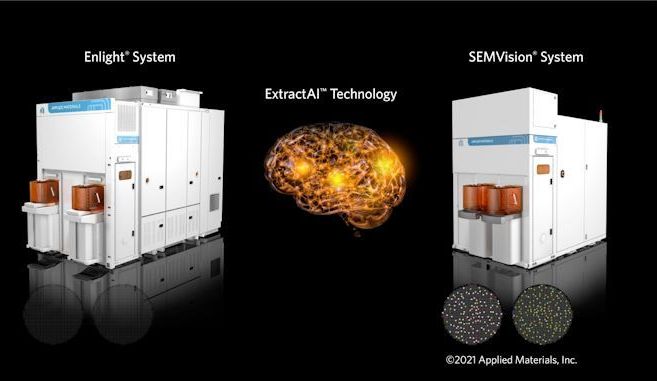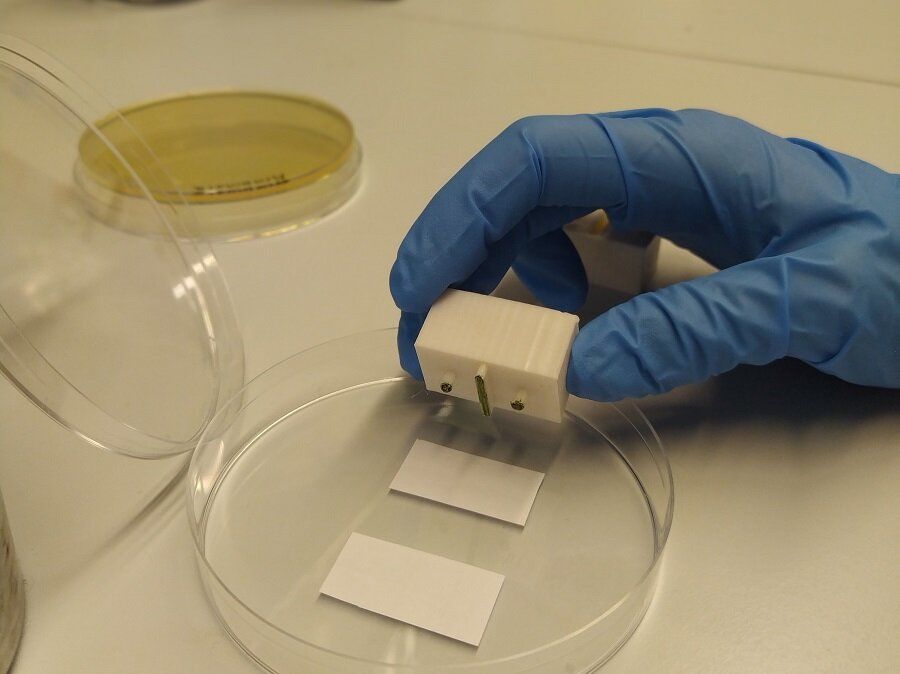Page 5491
Mar 20, 2021
Munching maggots help Singapore startup secure lucrative biomaterial
Posted by Derick Lee in categories: food, sustainability
Working in conjunction with Singapore’s Agency for Science, Technology and Research, Insectta’s technology uses a proprietary and environmentally friendly process to extract lucrative substances such as chitosan, melanin and probiotics from the larvae, it said.
SINGAPORE (Reuters) — In a quiet, mainly residential district of Singapore, trays of writhing black soldier fly larvae munch their way through hundreds of kilograms of food waste a day.
The protein-rich maggots can be sold for pet food or fertiliser, but at Insectta — a startup that says it is Singapore’s first urban insect farm — they are bred to extract biomaterials that can be used in pharmaceuticals and electronics.
Continue reading “Munching maggots help Singapore startup secure lucrative biomaterial” »
Mar 20, 2021
An All-Sky X-Ray Survey Finds the Biggest Supernova Remnant Ever Seen
Posted by Genevieve Klien in categories: cosmology, mathematics
Our sky is missing supernovas. Stars live for millions or billions of years. But given the sheer number of stars in the Milky Way, we should still expect these cataclysmic stellar deaths every 30–50 years. Few of those explosions will be within naked-eye-range of Earth. Nova is from the Latin meaning “new”. Over the last 2000 years, humans have seen about seven “new” stars appear in the sky – some bright enough to be seen during the day – until they faded after the initial explosion. While we haven’t seen a new star appear in the sky for over 400 years, we can see the aftermath with telescopes – supernova remnants (SNRs) – the hot expanding gases of stellar explosions. SNRs are visible up to a 150000 years before fading into the Galaxy. So, doing the math, there should be about 1200 visible SNRs in our sky but we’ve only managed to find about 300. That was until “Hoinga” was recently discovered. Named after the hometown of first author Scientist Werner Becker, whose research team found the SNR using the eROSITA All-Sky X-ray survey, Hoinga is one of the largest SNRs ever seen.
Hoinga is big. Really big. The SNR spans 4 degrees of the sky – eight times wider than the Full Moon. The obvious question – how could astronomers not have already found something THAT enormous? Hoinga is not where we typically are looking for supernova. Most of our SNR searches are focused on the plane of the Galaxy toward the Milky Way’s core where we’d expect to find the densest concentration of older and exploded stars. But Hoinga was found at high latitudes off the plane of the Galaxy.
Furthermore, Hoinga hides in the sky because it’s so large. At this scale, the SNR is difficult to distinguish from other large structures of dust and gas that make up the Galaxy known as the “Galactic Cirrus.” It’s like trying to see an individual cloud in an overcast sky. The Galactic Cirrus also outshines Hoinga in radio light, often used to search for SNRs, forcing Hoinga to hide in the background. Cross referencing with older radio sky surveys, the research team determined Hoinga had been observed before but was never identified as an SNR due to its comparatively faint glow in radio. Here eROSITA has an advantage as it sees X-rays. Hoinga shines brighter in X-ray light than the Galactic Cirrus allowing it to stand out from the Galaxy to be discovered.
Mar 20, 2021
AI Meets Chipmaking: Applied Materials Incorporates AI In Wafer Inspection Process
Posted by Genevieve Klien in categories: information science, robotics/AI
Advanced system-on-chip designs are extremely complex in terms of transistor count and are hard to build using the latest fabrication processes. In a bid to make production of next-generation chips economically feasible, chip fabs need to ensure high yields early in their lifecycle by quickly finding and correcting defects.
But finding and fixing defects is not easy today, as traditional optical inspection tools don’t offer sufficiently detailed image resolution, while high-resolution e-beam and multibeam inspection tools are relatively slow. Looking to bridge the gap on inspection costs and time, Applied Materials has been developing a technology called ExtractAI technology, which uses a combination of the company’s latest Enlight optical inspection tool, SEMVision G7 e-beam review system, and deep learning (AI) to quickly find flaws. And surprisingly, this solution has been in use for about a year now.
“Applied’s new playbook for process control combines Big Data and AI to deliver an intelligent and adaptive solution that accelerates our customers’ time to maximum yield,” said Keith Wells, group vice president and general manager, Imaging and Process Control at Applied Materials. “By combining our best-in-class optical inspection and eBeam review technologies, we have created the industry’s only solution with the intelligence to not only detect and classify yield-critical defects but also learn and adapt to process changes in real-time. This unique capability enables chipmakers to ramp new process nodes faster and maintain high capture rates of yield-critical defects over the lifetime of the process.”
Mar 20, 2021
Training AI to be really smart poses risks to climate
Posted by Genevieve Klien in categories: climatology, robotics/AI
As artificial intelligence models grow larger and consume more energy, experts have begun to worry about their impact on Earth’s climate.
Mar 20, 2021
Gene Therapy Using ‘Zinc Fingers’ May Help Treat Alzheimer’s Disease
Posted by Genevieve Klien in categories: bioengineering, biotech/medical, genetics, neuroscience
Summary: A new genetic engineering strategy significantly reduces levels of tau in animal models of Alzheimer’s disease. The treatment, which involves a single injection, appears to have long-last effects.
Source: Mass General.
Researchers have used a genetic engineering strategy to dramatically reduce levels of tau–a key protein that accumulates and becomes tangled in the brain during the development of Alzheimer’s disease–in an animal model of the condition.
Mar 20, 2021
Worlds With Underground Oceans – Like Europa, Titan, and Enceladus – May Be More Conducive to Supporting Life Than Earth
Posted by Genevieve Klien in categories: alien life, satellites

Layers of ice and rock obviate the need for “habitable zone” and shield life against threats.
SwRI researcher theorizes worlds with underground oceans may be more conducive to life than worlds with surface oceans like Earth.
Mar 20, 2021
World’s First Airport For Flying Cars And Drones Opens This Year
Posted by Prem Vijaywargi in categories: drones, robotics/AI
Urban Air Port has chosen to build its first Air-One transport hub for autonomous delivery drones and electric flying cars next to the Ricoh Arena in Coventry, UK. The futuristic facility will launch later this year. It will support delivery drone and air taxi technology and eventually transport cargo and people across cities.
Mar 20, 2021
Astronomers tracking supermassive black hole currently on the move through space
Posted by Quinn Sena in category: cosmology
A supermassive black hole is speeding across the galaxy, and astronomers are baffled as to why.
Mar 20, 2021
Researchers design a biological device capable of computing
Posted by Quinn Sena in categories: bioengineering, biotech/medical, computing
The Research Group on Synthetic Biology for Biomedical Applications at Pompeu Fabra University in Barcelona, Spain, has designed a cellular device capable of computing by printing cells on paper. For the first time, they have developed a living device that could be used outside the laboratory without a specialist, and it could be produced on an industrial scale at low cost. The study is published in Nature Communications and was carried out by Sira Mogas-Díez, Eva Gonzalez-Flo and Javier Macía.
We currently have many electronic devices available to us such as computers and tablets whose computing power is highly efficient. But, despite their power, they are very limited devices for detecting biological markers, such as those that indicate the presence of a disease. For this reason, a few years ago ‘biological computers’ began to be developed—in other words, living cellular devices that can detect multiple markers and generate complex responses. In them, the researchers leverage biological receptors that allow detecting exogenous signals and, by means of synthetic biology, modify them to emit a response in accordance with the information they detect.
So far, cellular devices have been developed that must operate in the laboratory, for a limited time, under specific conditions, and must be handled by a specialist in molecular biology. Now, a team of researchers from Pompeu Fabra University has developed new technology to ‘print’ cellular devices on paper that can be used outside the laboratory.
















